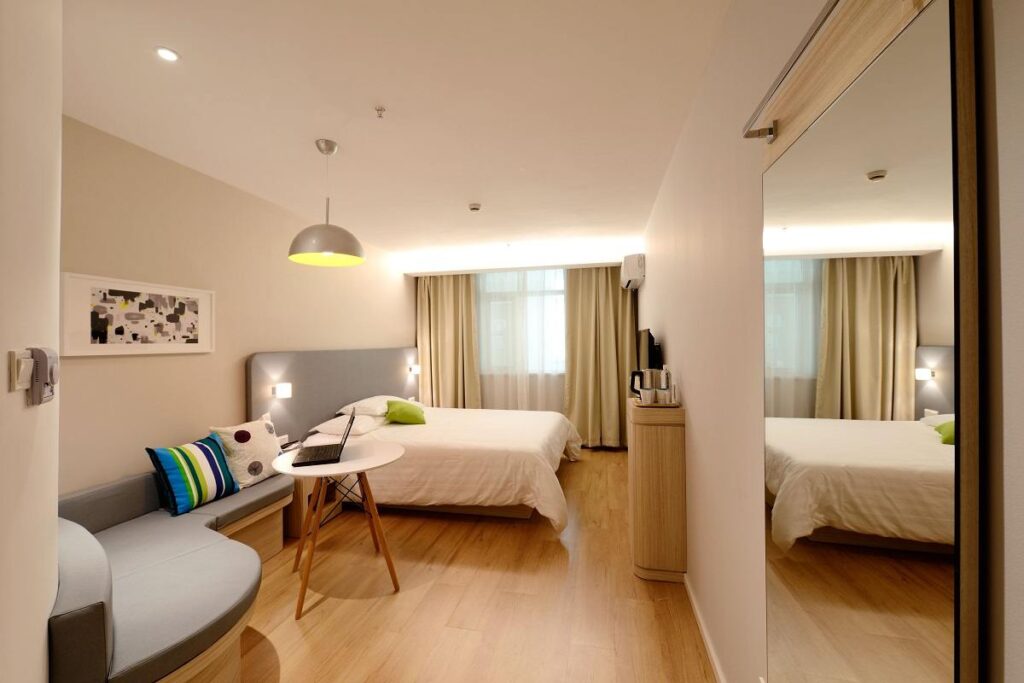
Do you remember the first time you walked into a restaurant or hotel and felt welcome, excited, or at peace? Creating those feelings in any space with a properly coordinated color scheme is possible.
Harmony is achieved between rooms with a well-thought-out color scheme. If you don’t know what color combinations work well together, you’re setting yourself up for failure. If you’re finding apartments for rent in salt lake city ut, these tips will help you fix up your haphazard space, create your ideal mood, and feel truly at home.
Choose your look from Color Wheel
Beginners can benefit greatly from a color wheel. Color schemes can be easily created with its help. There are 12 different hues on a color wheel. Cool colors make up six of these, while warm colors make up the other half. Primary, secondary, and tertiary colors fall into these categories.
Primary colors exist on their own. Therefore, it cannot be created by mixing colors. These colors include red, yellow, and blue. Mixing two primary colors creates a secondary color, such as green, purple, or orange. Combining two primary colors creates a tertiary color. For example, magenta combines purples and reds (magenta), teal combines blues and greens (teal), and yellow combines oranges and yellows (amber). A color can be tinted, shaded, or toned by adding black, white, or gray.
Then why are we sending you back to the art class? We can better understand color interaction and complementation by understanding the color wheel. Here are a few color wheel strategies to decorate your adult apartment.
The Monochromatic Scheme:
You can use shades, tones, and tints of the same color throughout your apartment or room. Keeping a room balanced and minimalistic is achieved with gradual changes. For a library, meditation room, or study, blue or green shades, tints, and tones can create a feeling of calm and serenity.
The Complementary Scheme:
On the color wheel, grab two colors directly opposite each other. A contrast between these colors creates energy and burst. It is possible to add bursts of orange art and furniture to a room painted blue or teal, for example. Use brighter colors sparingly.
The Analogous Scheme:
A harmonious pattern can be created by choosing two or more colors from the same color wheel. Moderation is key when using colors in the room.
The Triadic Scheme:
The triadic scheme uses three colors in an equally spaced triangle from the wheel. This strategy creates an empowered, energetic design by combining colors that vary dramatically. The trick to incorporating significantly different colors in the same scheme is to choose a primary color and complement it sparingly with the other two. Colors can also be avoided by using softer tints.
The Complementary Split Scheme:
This color scheme creates a less drastic look than the triadic scheme. You can implement this scheme by creating a color triangle but selecting a complementary color on either side—a quieter decoration scheme results in a burst of colors.
An amateur can easily create a room that looks like a professional designed it by taking these color schemes and playing with designs. Use more powerful colors in moderation and complement them with the right furniture, art, rugs, and light fixtures. These styles will bring your favorite colors to life in your apartment once you discover them.
Here are some examples of color schemes in action.
A Pattern Can Inspire You
Knowing what the result should look like before you begin is important. It doesn’t mean you can’t be creative along the way, but you should have a few ideas before painting the wall. The best way to get inspired is to find a single patterned object that excites you. You’re drawn to that patterned piece because of its hues, which bring joy to your entire color scheme.
Neutrals are a sure thing
You can easily pull a space together using neutral colors for 30-40% of your color scheme. In the long run, this may be less exciting, but it will ensure that your area looks mature, cultured, and pleasing to the eye. This color scheme is particularly important if you want to meditate or relax after a long day.
Please give it a pop
Your apartment will look shabby if you don’t incorporate a few bright pops of color. Yellow, red, and pink colors are purposefully used in this technique. Moderation is the key to using these colors in your space—maybe three or four times. In addition to pillows, artwork, rugs, and lighting fixtures, you can utilize this method effectively. Match the color shades as closely as possible.
Make Shade Inclusive
You can use a lateral color palette if you have a lot of space. You can use similar hues and shades that are close neighbors of a shade. You can create a simple yet gorgeous space by using grays, blues, and greens with a pop of color like orange. Ensure you have ample space in the room to showcase and utilize the different shades if you choose this route.


